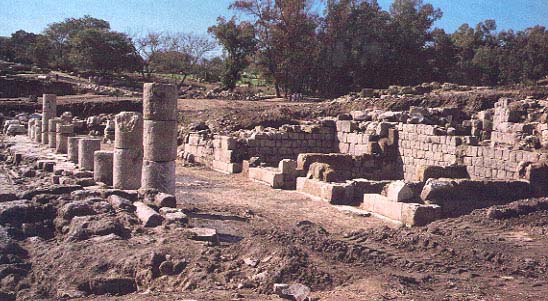Image Details

Gabi Laron/Institute of Archaeology, Hebrew University
Elegant strolling and shopping. Along this impressive boulevard, Beth-Shean’s residents could walk between the central civic area and the theater. The pavement—still largely in place—consisted of black basalt flagstones set diagonally in herringbone-fashion. The street was first built in the second or third century A.D. but did not reach its elaborate final state until the Byzantine period.
A raised, covered, colonnaded sidewalk ran 2 to 4 feet above the west side of the street (center). Almost 20 feet wide, the sidewalk was first paved with mosaics and, later, marble. Fronting the sidewalk was a row of shops. Remnants of marble on the shop facades suggests that they were probably covered with marble. In keeping with marble facades, mosaics decorated some shop floors. Clearly we have here the Fifth Avenue of Beth-Shean.
